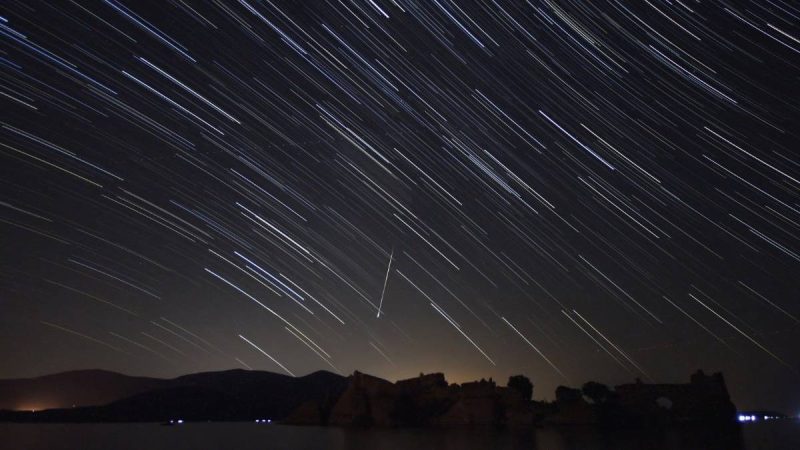Good news for all skygazers! This time, the Draconid meteor shower will kick off on the same night as the supermoon, aligning with the start of two other meteor showers. It is expected to give stargazers a memorable celestial show. The Draconid meteor shower began on October 6 and will go on till October 10. Keep reading for more details.
All About The Draconid Meteor Shower
According to NASA, the Draconid meteor shower started on October 6, Monday and will go on till October 10, Friday. This event happens every year when the Earth passes through the trail of debris left by the comet 21P Giacobini-Zinner. The comet leaves behind small particles in space, and as these tiny bits enter the Earth’s atmosphere, they burn up, creating bright streaks of light across the sky. These streaks are what we see and call shooting stars, according to Hindustan Times.
However, this year watching the Draconid meteor shower was a bit trickier than previous times. Why? Because it coincided with a supermoon on October 6. A supermoon happens when the moon is closer to the Earth, making it appear about 14% larger and up to 30% brighter than usual, which makes it difficult to see fainter meteors, but the sky at night looks absolutely amazing. The meteor shower is expected to reach its peak on October 8, when the moon will be fully illuminated at 96%.
Also Read: What Is Harvest Moon And Where Can You Watch This Bright Full Moon In 2025 In India?
Best Time To Watch
If you’re planning to catch the Draconids, the best time to watch them is right after sunset. The meteors will seem to arrive from the Draco constellation, which lies in the northern sky. People in the Northern Hemisphere, including regions like the United States, Europe, and parts of Asia, will have the best view of the meteor shower, reported Hindustan Times.
According to NASA, to get a clear view, find a wide, dark area away from artificial lights and give your eyes 20–30 minutes to adjust to the darkness. Apart from this, many other meteor showers are also on their way. The Orionids, Leonids, and Ursids later this year are set to offer clearer skies and less moonlight, making them perfect for stargazing.
How excited are you to watch the Draconid Meteor Shower? Let us know in the comments below!
Also Read: Swim Under The Glow Of The Harvest Supermoon At This Abu Dhabi Beach Club
Cover Image Courtesy: Canva Pro/ BT1976 (Representative Image)

